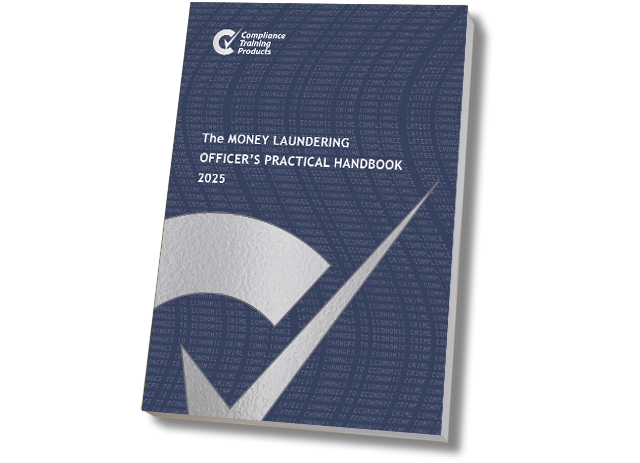The definitive best practice guide for the money laundering reporting officer, featuring:
- Economic crime intelligence – track economic crime prevention measures continuing to take effect, and understand what legislative changes mean for your procedures and ongoing compliance.
- Changing identity verification – as relevant UK standards are enhanced, new controls and procedures enable effective digital identity verification via trusted online tools.
- AML compliance procedures – our suite of curated policies, controls and procedures, reflecting the Handbook’s ten step format and the latest Regulations, is ready for adaptation to your firm’s individual needs.
- Zero-risk purchase offer – if you order the Handbook, we’ll post it straight away. Reflecting our confidence in quality, you can return it within 14 days for a full refund if you decide it doesn’t meet your needs.
Free postage within the British Isles.

Revised and updated annually
The 10 step guide to economic crime compliance
Sector-specific guidance
With tailored guidance for Accountants, Law Firms, Financial Services, Property Firms, plus Jersey, Guernsey and the Isle of Man.
Free template documents
As a buyer you’ll receive sample policy and procedure documents and ready-made forms and checklists in Word™ format to adapt for your firm.
A rapid action plan
An action statement at the start of each chapter helps you identify changes needed to your regime, supporting you in your compliance goals.
The Money Laundering Officer’s Practical Handbook is an indispensable guide to implementing a robust compliance regime within the latest regulatory environment:
The Handbook sets out a straightforward ten-step route to compliance. Each step includes a concise action plan, with sample policies, controls and procedures, supplemented with clear and authoritative guidance:
-
- Step 1: Assessment of money laundering risk.
- Step 2: Verification of identity.
- Step 3: Knowing your client’s business.
- Step 4: Ongoing monitoring.
- Step 5: Record-keeping.
- Step 6: Internal suspicion reporting.
- Step 7: Disclosure to the authorities.
- Step 8: Freezing transactions and consent to continue.
- Step 9: Training.
- Step 10: Monitoring and management of compliance.
A following section provides an explanation of today’s regulatory environment, including relevant international standards, a breakdown of money laundering offences and defences, and key legislative developments.
Further sections offer additional guidance on the ten-step process, pinpointing the specific approach that must be taken for the following business sectors and jurisdictions:
-
- Accountancy Firms
- Law Firms
- Financial Services Firms
- Property Firms
- Guernsey, Jersey and the Isle of Man
A separate section offers guidance on Bribery & Corruption, including the assessment of risk and how to set out policies and procedures for your firm.
An updated Glossary of Terms at the end of the Handbook shines a light on acronyms used throughout the chapters.